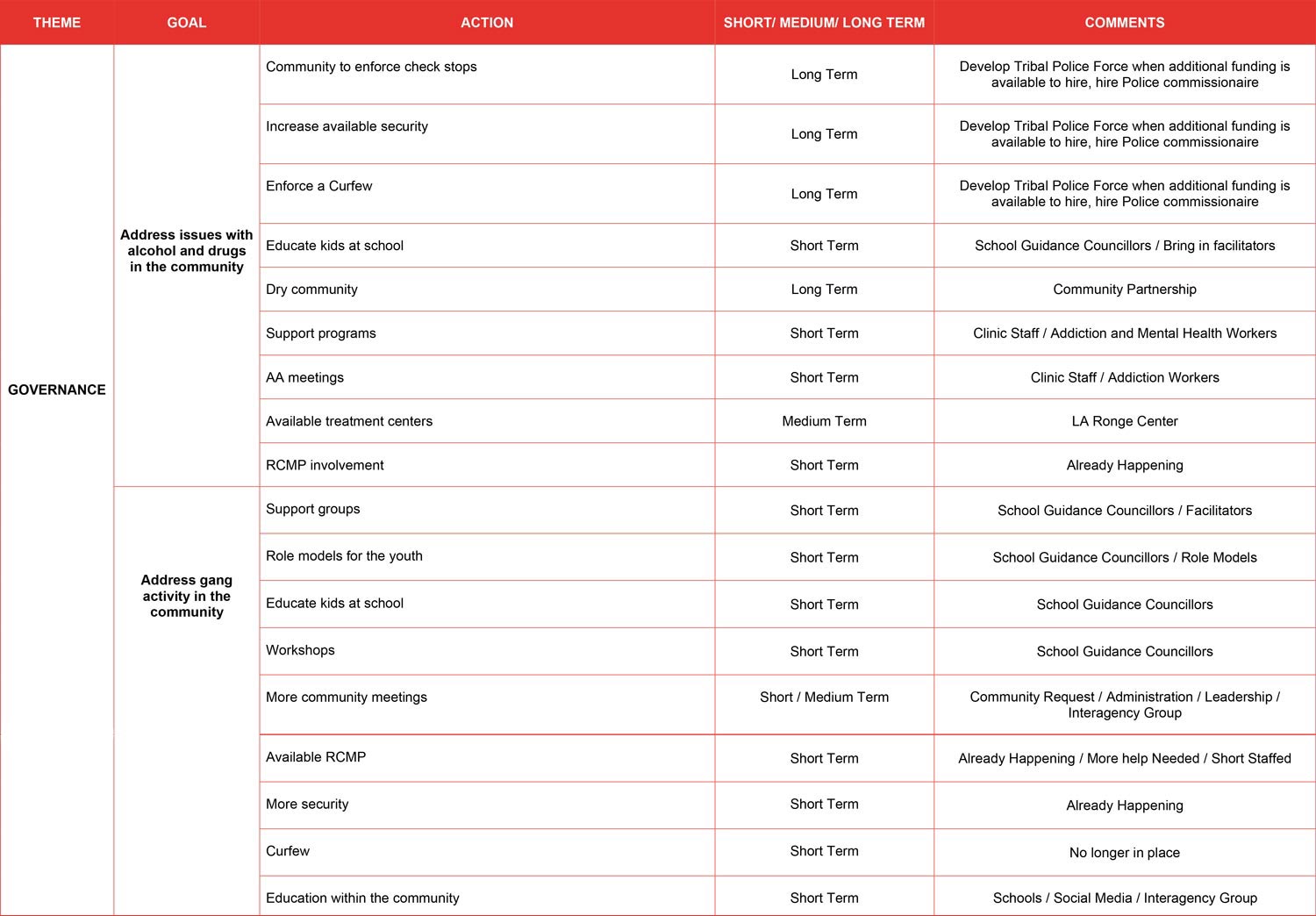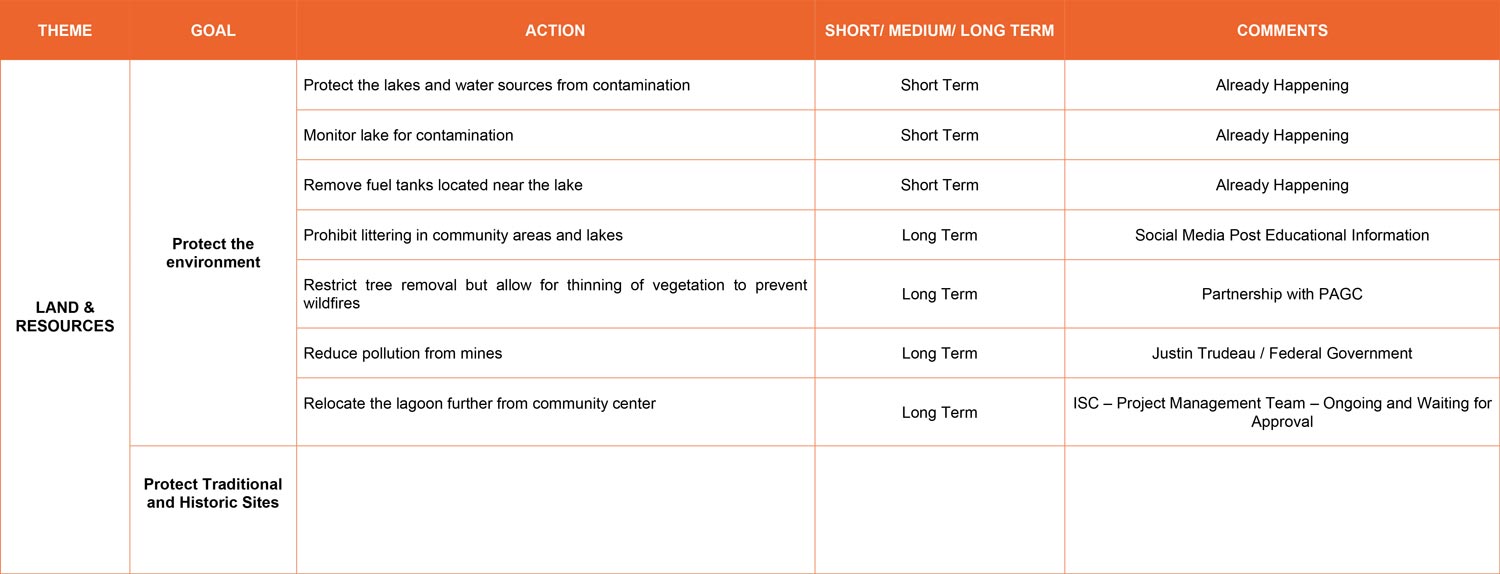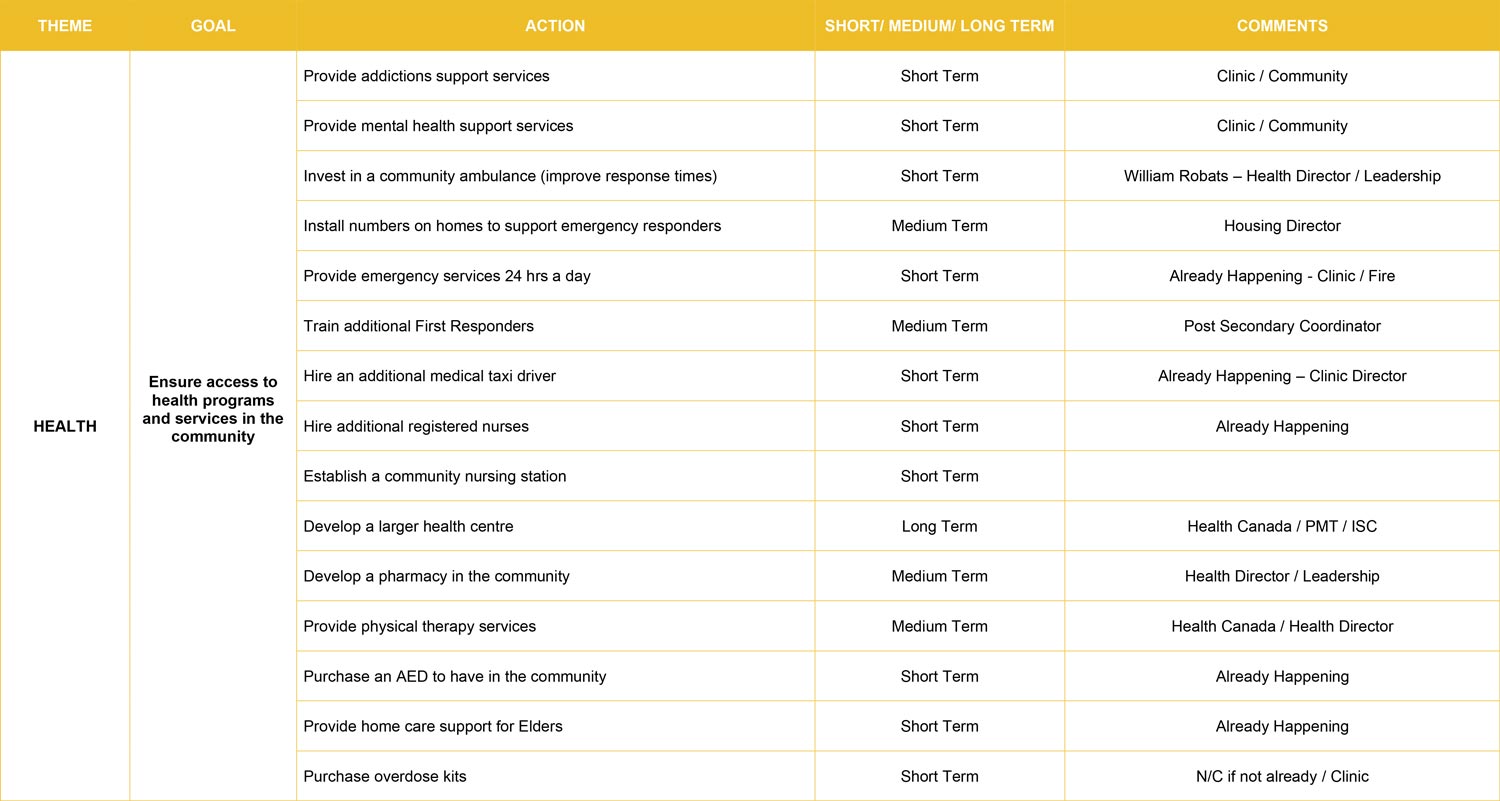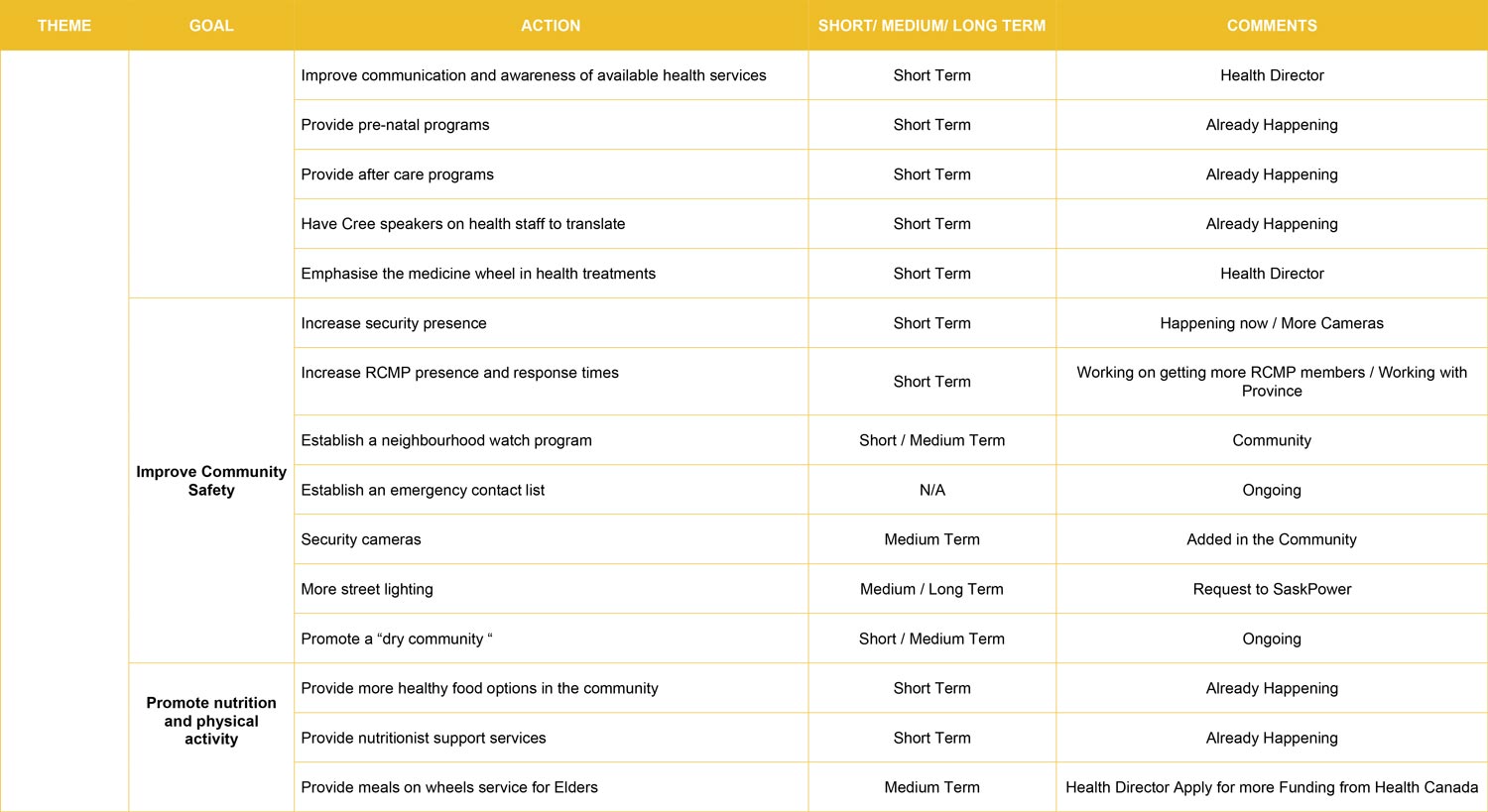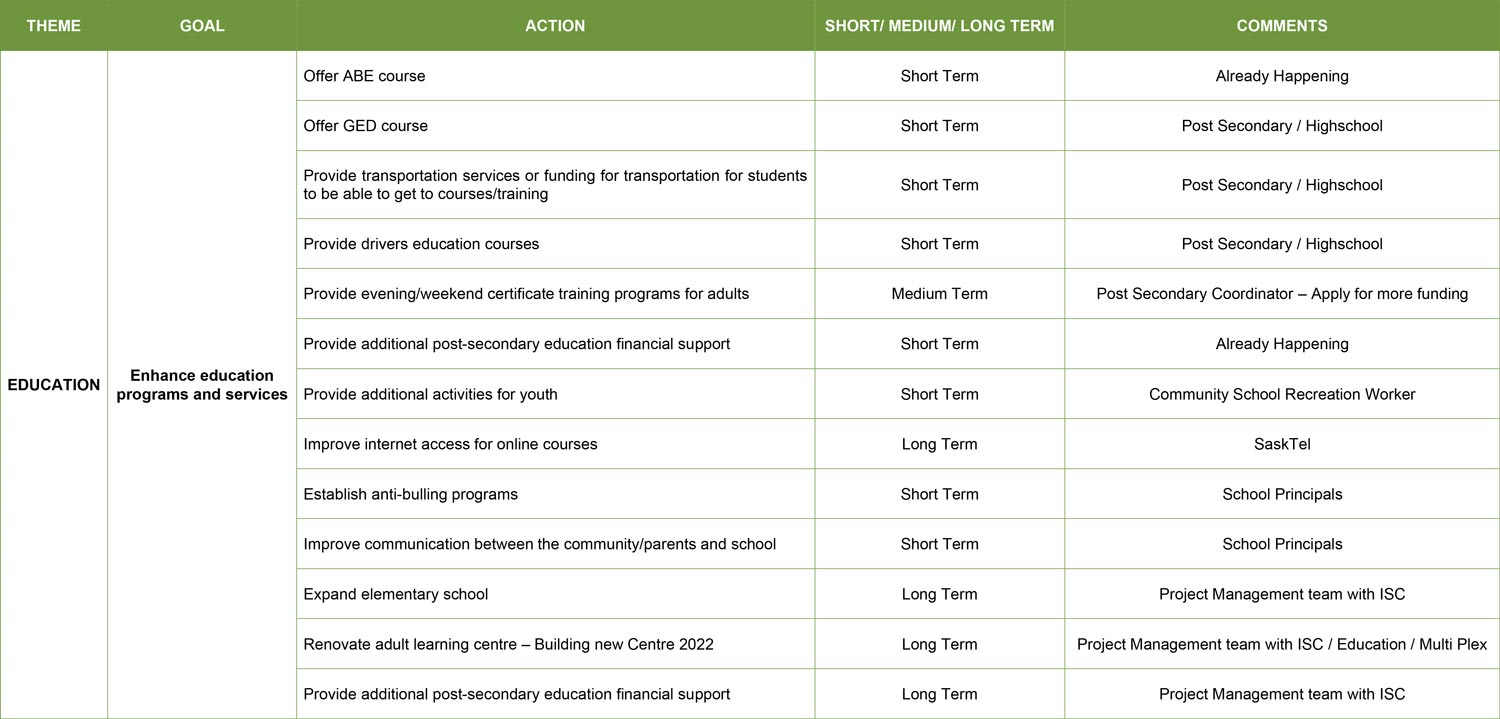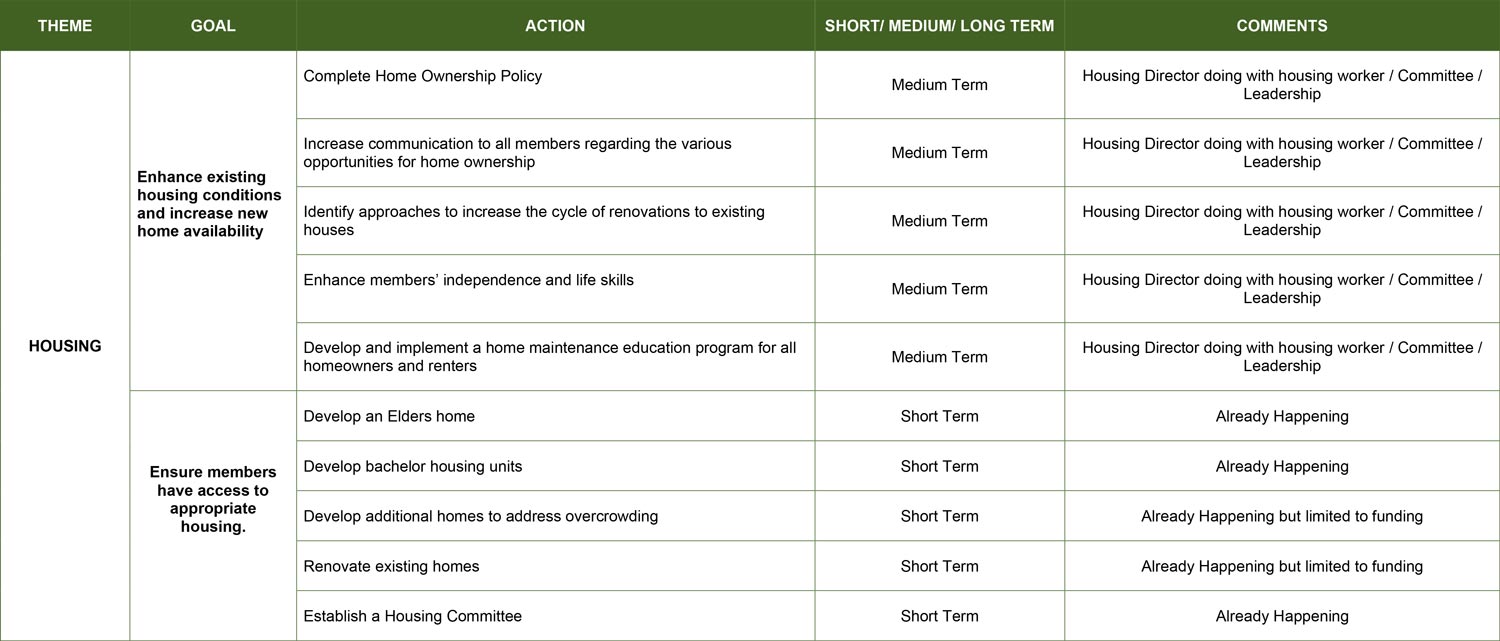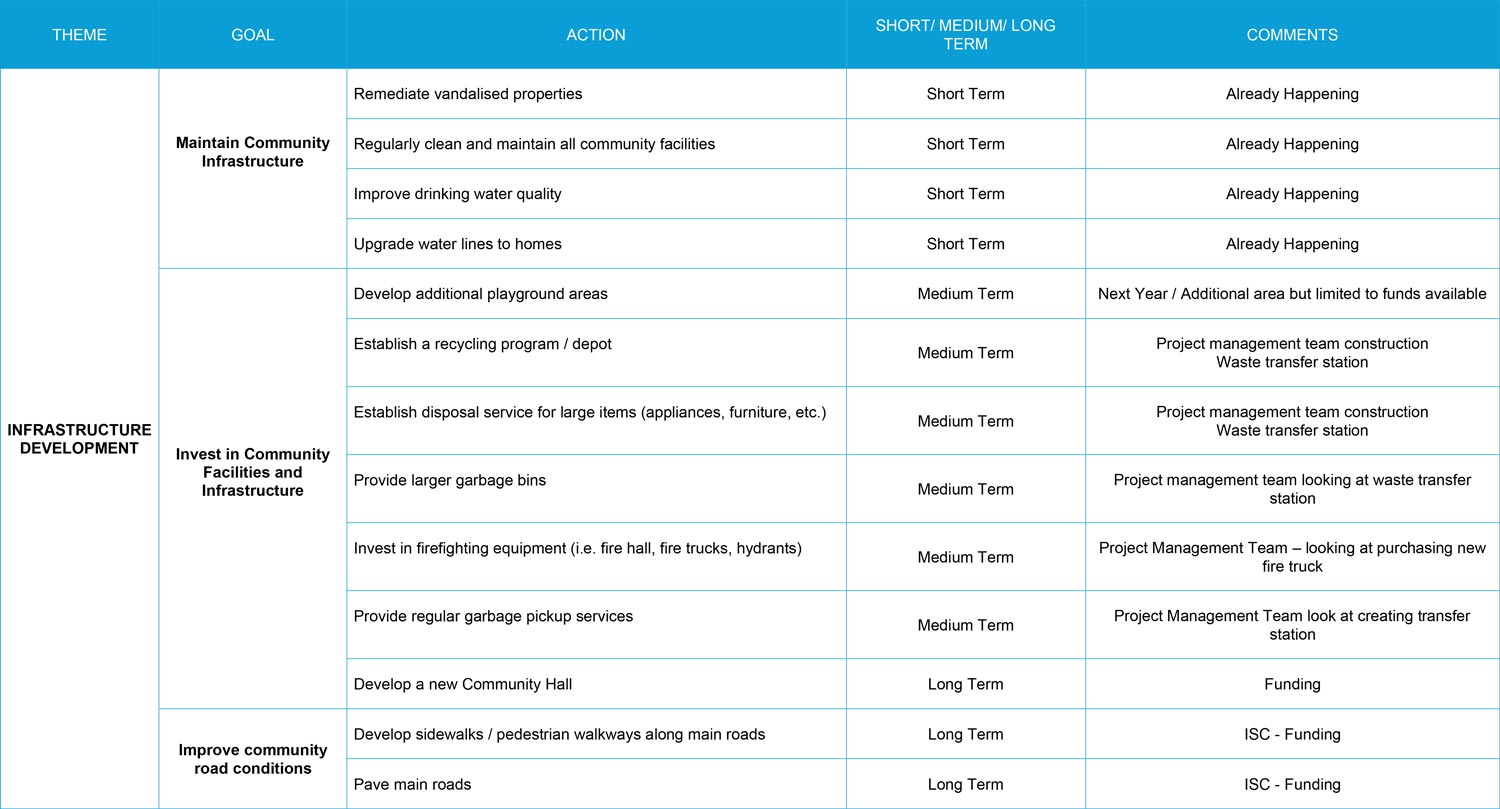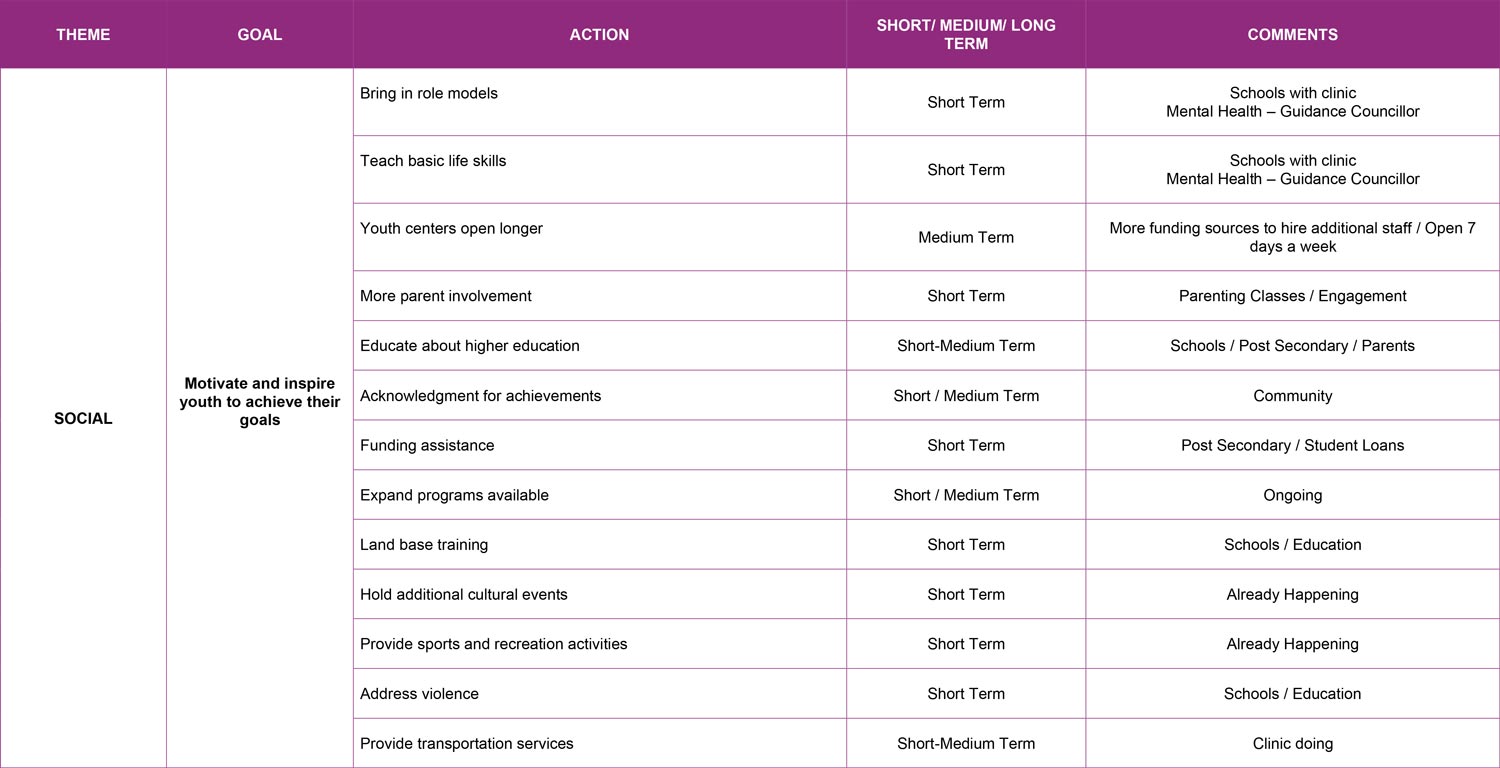Stanley Mission Implementation Tables
La Ronge – Morin Lake Reserve (Hall Lake) – Stanley Mission – Little Red – Sucker River – Grandmother’s Bay
Location: 81 KM North of La Ronge.
Population: 1951
| Contact | Phone | Fax |
| Sub Office | 306 635 2115 | 306 635 2265 |
| Keethanow Elementary School | 306 635 4402 | 306 635 2233 |
| Rhoda Hardlotte Memorial Keethanow High School | 306 635 2104 | 306 635 2050 |
| Health | 306 635 2090 | 306 635 2189 |
| Daycare | 306 635 4410 | 306 635 2108 |
| Headstart | 306 635 2200 | 306 635 2201 |
The Stanley Mission community is situated on the banks of the majestic Churchill River System in Northern Saskatchewan
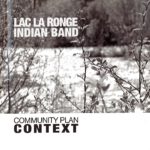
Culturally Significant Areas (excerpt CCBP, 2012).
The reserve area of Stanley Mission is quite small and densely populated for the most part, resulting in most of the culturally significant areas being outside of the community. Cultural areas identified in the surrounding area include: important fishing areas, spiritual places and significant historical sites. The island to the northeast of Stanley Mission has considerable cultural significance as a historical gathering place for the Amachewespimawin people due to its location on the Churchill River. The area is a Provincial and National Historic Site and home to the Holy Trinity Anglican Church built in 1860, which is the oldest building in Saskatchewan. These areas identified should be respected and preserved as the community develops in the future.
In addition to the lands identified as culturally significant within Stanley Mission, Lac La Ronge Indian Band (LLRIB) has identified their traditional land use boundary as stretching from Big Sandy Lake in the South, to Foster Lake in the North, putting much of central Saskatchewan within their traditional territory. The Band has identified the location and significance of this territory, and has developed goals for these lands in its LLRIB Band Policy on Traditional and Contemporary Land Use.
Hunting, fishing, trapping and foraging are important activities to many community members. They are important to the traditions and culture of Stanley Mission and provide opportunities for economic ventures, recreation and greater self-sufficiency. This map highlights areas that are important to these activities, including important wildlife habitat, and fishing grounds. Much of the significant vegetation and wildlife exists beyond the reserve boundary within the traditional territory of Lac La Ronge Indian Band.
Google Maps – https://goo.gl/maps/M6UNJVXXh962
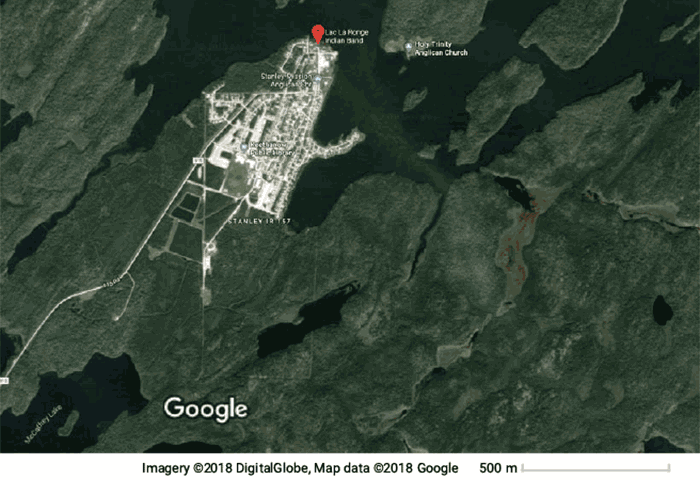
Community Survey Response Summaries:
2019-04-29-STANLEY MISSION-Summary
2019-05-01-ALL RESPONSES-Summary
Community Development Plan
PDF Download – 2022-LLRIB-CCP-Stanley-Mission
Acknowledgements

This Community Development Plan was developed with significant input from the members of the Lac La Ronge Indian Band (LLRIB) under the leadership of the Community Advisory Team (CAT). In the 2016-2017 fiscal year, the Executive Director applied for funding and began lobbying Indigenous Services Canada (ISC) to pursue funding for comprehensive community planning; funding was provided in December 2018. The project began with the recruitment of two Navigators, Leonard Roberts in La Ronge and Cora Ballantyne in Stanley Mission.
The CAT was appointed by Chief and Council, they began meeting and developing a plan of how to involve as many LLRIB members in community development planning as well as providing direction and support to the Navigators. The Advisory Committee members were as follows:
| Chair: | Gladys Christiansen | La Ronge |
| Co-Chair: | Gordon Hardlotte | Stanley Mission |
| Councillors: | Ann Ratt | La Ronge |
| Mike Bird | La Ronge | |
| Jimmy Charles | Stanley Mission | |
| Gerald McKenzie | Grandmother’s Bay | |
| Devin Bernatchez | Sucker River | |
| Norman Ross | Morin Lake | |
| John Halkett | Little Red |
I would also like to take this opportunity to thank the former members: Kenny Ratt (Sucker River), Angus Mirasty (Little Red), Larry Charles (Stanley Mission), they were instrumental in providing direction and feedback for this comprehensive community plan.
The LLRIB Chief & Council and management team (program directors) are involved in regular strategic planning, every 3-5 years the plan is updated. However, the last community planning took place in 2006. It was time to go back out to the communities to solicit their input and feedback as to what had been accomplished since the last community plan.
The Comprehensive Community Planning Initiative provides an opportunity for community members to have a voice in the community’s needs, goals and informs the leadership and management of the communities’ priorities.
The goals in the Comprehensive Community Plan are the results from the community feedback we received from LLRIB members, it is community based planning. What we heard from the community is that everyone wants a safe community, where families can feel safe in their homes and communities.
There are 4 stages to these plans, gathering information, identifying strengths and issues, identifying priority areas and lastly, implementing and monitoring the plan. Our job is to ensure that these plans do not sit on the shelf, that we are all working collaboratively towards these community goals. We all want safe communities for our children, grandchildren, and great grandchildren now and into the future.
Table of Contents
1 Introduction
1.1 The Planning Process
1.2 Community Engagement
2 Community Profile
2.1 Community History
2.2 Demographics
2.3 2012 Community Plan – Actions Areas
2.4 Accomplishments
3 Community Goals
Governance
Land, Resources & Environment
Health
Education
Infrastructure / Public Works
Housing
Social
Economy
4 Community Action
4.1 How to Use This Plan
4.2 Monitoring, Evaluating, and Updating this Plan
4.3 Implementation Table
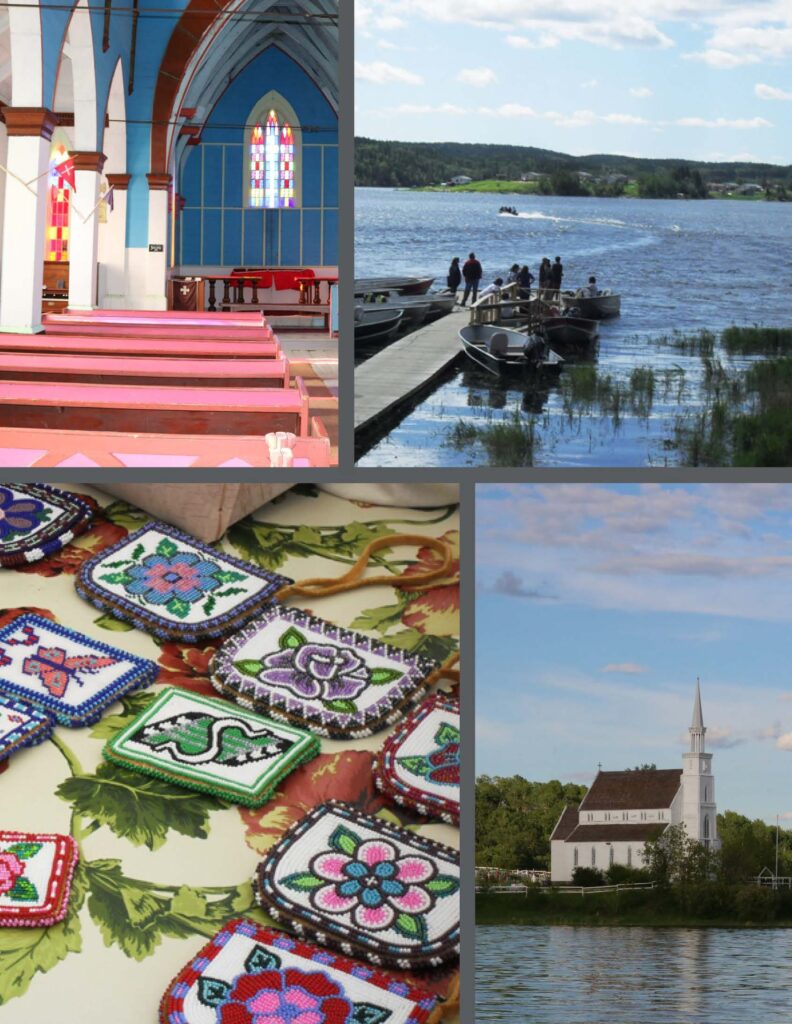
1 Introduction
The Community Development Initiative (CDI) is an approach to community planning that establishes a vision for the future and prioritizes community projects and programs for implementation to pursue the vision. The philosophy guiding the plan is that members themselves can improve the community by working together, building consensus on priorities and actions, building on community assets and developing individual capacity.
The plan integrates goals and actions included in other planning documents already established by the community. The plan provides leadership and staff direction on how key issues in the community should be addressed to work towards self-sufficiency. The plan can also be used to leverage funding and partnerships from external agencies.
The plan includes measurable indicators that can be used to assess the overall health and well-being of the community. Being able to measure progress is important as it allows community members, leaders, and federal agencies to understand what effect investment is having in the community. Over time, the consistent measurement of capacity development and community well-being indicators allows for periods of reflection on progress and a greater understanding of how future investments can address the community’s evolving needs and priorities.
Lac La Ronge Indian Band has undertaken significant work to develop the plan. Having clear community vision, goals, and actions that are endorsed by the community is critical to a prosperous future. The community is committed to supporting a plan that captures local ideas and aspirations, provides direction for the future, and serves as a tool for immediate and ongoing action.
1.1 The Planning Process
The planning process consists of the following four stages:
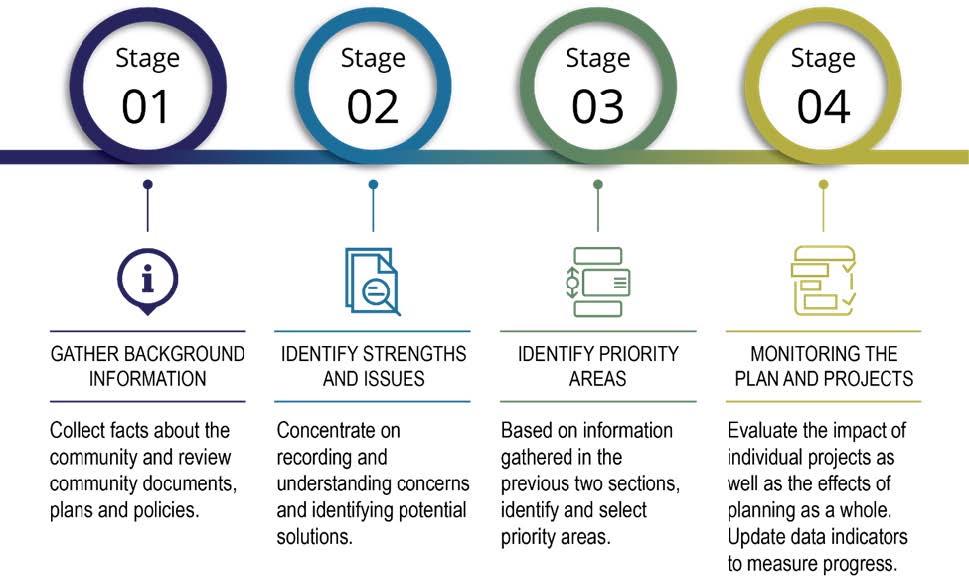
1.2 Community Engagement
The most fundamental characteristic of the Community Planning process is that it is community based. The goals and measurement tools described in this Plan are a direct response to the concerns, suggestions and feedback of community members, band staff, and Chief and Council. Ideas contained in the plan have strength, power and endurance because they come from the people of LLRIB.
During the creation of this Plan the following community engagement opportunities were shared with members to contribute:
- Community Survey (February 2019 – April 2019)
- School Engagements (March 2019 – April 2019)
- Treaty Day Engagements (May 2019 – June 2019)
- Urban Member Treaty Day Engagements (June 2019)
- Staff Questionnaires (2019)
- Elder Interviews (2019)
- Youth / School Engagements (March 2019 – November 2019)
- Community Meetings (October 2019 – November 2019)
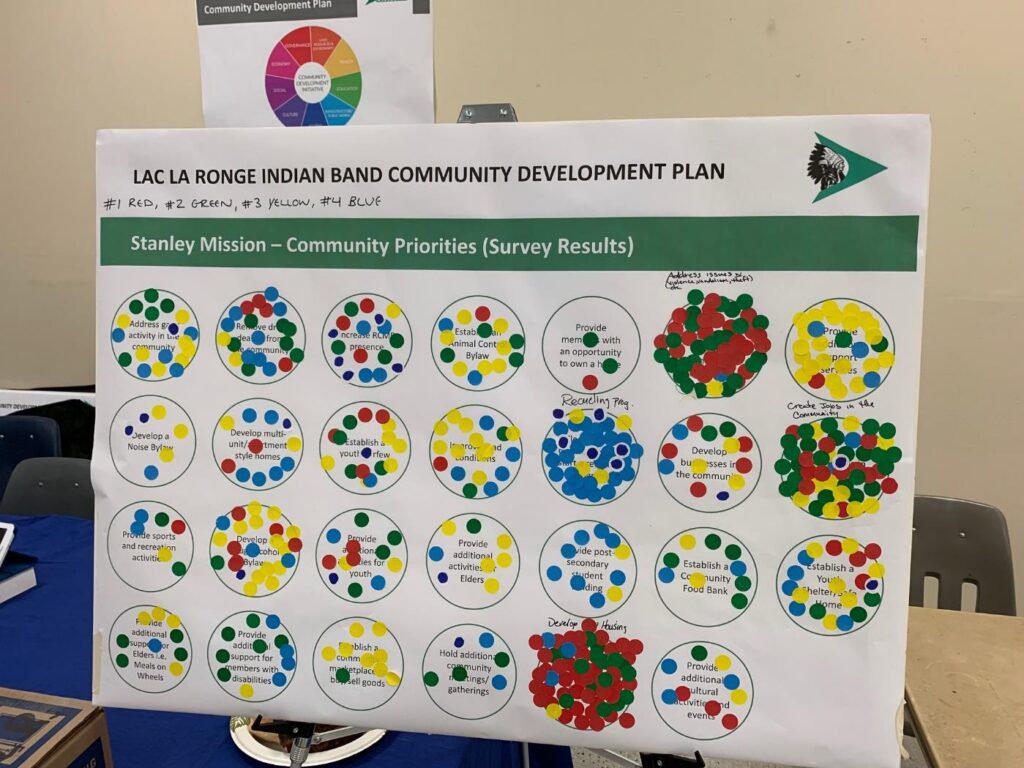
2 Community Profile
2.1 Community History
The community of Stanley Mission is located 80 kilometres of La Ronge Saskatchewan on the south shore of the Churchill River. The community is part of the Lac La Ronge Indian Band, one of the largest First Nations in Canada. The community was discovered by European traders and Anglican Missionaries in the 1700 – 1800’s on the north shore of the Churchill River. The woodland Cree in the area traded with the companies that started operating along the Churchill River system. The Anglican Church was constructed on the North shore of the Churchill River and this attracted people to settle in the area. The North shore was settled due to agriculture potential, later the Hudson’s Bay Company opened a post on the South shore of the Churchill River and made a settlement with a small piece of land, which now is known as the Hamlet side of Stanley Mission.
In 1889 Treaty 6 was signed by Chief James Roberts and adhesion to Treaty 6 at the north of Montreal Lake on behalf of the James Roberts Band, which included members from Stanley Mission. Stanley Mission reserve #157 was surveyed adjacent to the Northern settlement in 1909 and reached its official reserve status in 1930.
After the signing of the Treaty 6 under James Roberts Band, from 1888 – 1901 the chief was James Roberts, in 1895 Peter Ballantyne and seven other families of Ballantyne were paid annuities under James Roberts Band (pay list 1895). In 1900 Peter Ballantyne was allowed to form his own Band under his name which now is known as Peter Ballantyne Cree Nation in the Pelican Narrows area. La Ronge and Stanley Mission under one Band 1901-1910 the chief was Amos Charles. In 1910 James Roberts Band split into two Bands: one under Chief James Roberts Band and the other following Chief Amos Charles Band (Stanley Mission). Stanley Mission had their own Band with three different chiefs from 1910 – 1930 the chief was Amos Charles, 1930 – 1945 chief was Walter McKenzie, and in 1945-1950 chief was Nehemiah Charles. La Ronge also had two different chiefs from 1910 – 1946 the chief was Joseph Charles, and from 1946 – 1950 the chief was Moses Ratt. In 1950 the two Bands amalgamated into one Band which is Lac La Ronge Indian Band (Preliminary Report, 1972). 1950 – 1955 the two chiefs joined, chief Nehemiah Charles (Stanley Mission) and Moses Ratt (La Ronge). From 1955 – 1967 there was no chief for the LLRIB until 1967, Chief Isiah Charles was elected, from 1967 -1971 the chief was John Cook, 1971 – 1983 Chief Myles Venne, 1983 – 1985 Chief Thomas (Tom) McKenzie, 1985 – 1987 Chief Myles Venne, and from 1987 – 2005 Chief Harry Cook. From 2005 – present Chief Tammy Cook- Searson.
Treaty 6 – 1876
On August 23, 28, and September 9, 1876, Treaties were signed near Fort Carlton and near Fort Pitt, Saskatchewan. The promises written in the Treaties included assistance with transition of a new way of life; right to hunt, trap, and fish; tax exemption; education; medical assistance, reserve land, agricultural tools, support, and peaceful co-existence with the newcomers, Treaty annuity payment of $5.00 for each status member; purchase of ammunition and twine for nets; farming tools: hoes, harrow, scythes, hay forks, reaping hooks, axes, cross-cut saw, hand-saw, pit-saw, grindstone, auger, carpenter’s tools, wheat, barley, potatoes and oats to plant; and housing or buildings and compensation made for the value of any improvements.
Treaty 6 Adhesion, 1889
Adhesion to Treaty 6 between the Woodland Cree and representatives of the Crown were signed at the north end of Montreal Lake, Saskatchewan on February 11, 1889 by James Roberts and his headmen (Elias Roberts, Amos Charles, Joseph Charles, and John Cook). Treaty adhesions were signed at later dates because not all First Nations could be present at the treaty negotiations. The adhesions are the same as the treaties originally signed near Fort Carlton and Fort Pitt. Vicky Roberts, the granddaughter of Chief James Roberts, wrote that James Roberts was hesitant to sign treaties at first because he was afraid if he signed the Treaty “…there would be trouble for his people in the future, yet if he did not sign, his people would starve to death, as they were near starvation by this time” (Roberts, V. 1997). The clause in the Treaty which promised to help the Indians in time of famine persuaded him to sign.
The Lac La Ronge Indian Band was formerly named Chief James Roberts Band. In 1910, the James Roberts Band split into two bands, one stayed as Chief James Roberts Band which included Little Red River Reserve, and all outlining areas except Stanley Mission. The other band was under Amos Charles which covered only the Stanley Mission reserve. The two bands amalgamated in 1950 and became known as the Lac La Ronge Indian Band. The Lac La Ronge Indian Band communities are: Morin Lake Reserve (Hall Lake, Sikachu, Clam Lake Bridge), Stanley Mission, Little Red River, Nemeiben (also known as Sucker River), Grandmothers Bay, and La Ronge (Bells Point, Queen Street, Far Reserve, Big Stone, 101, Jack Pine, Morin’s Hill, Second Post, Big Rocks, Charles Street).
2.2 Demographics
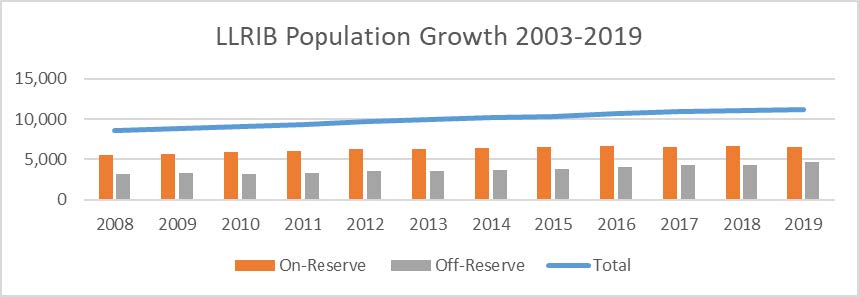
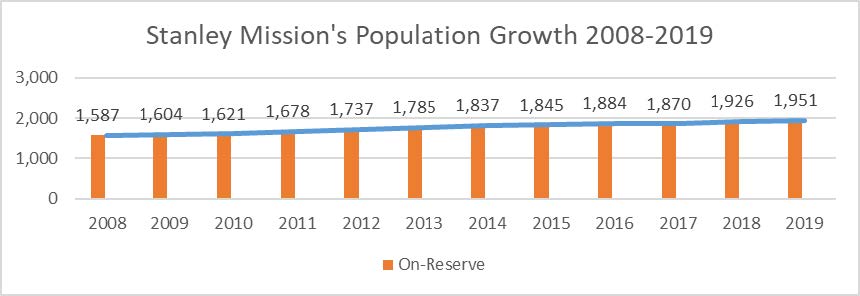
2.3 2012 Community Plan – Actions Areas
Action Area 1: Capitalize on Our Assets to Stimulate Entrepreneurship. Promote economic development and entrepreneurship, increasing opportunities for Band members to gain skills and start businesses that build on the unique strengths of LLRIB.
Action Area 2: Open Communication, Governance, and Leadership. Foster discussion and community involvement, encouraging community engagement and communication across LLRIB.
Action Area 3: Re-Invent Housing. Innovate new approaches to housing, developing housing option that meet the local needs of the community and serve as catalysts for community development.
Action Area 4: Promote Recreation and Wellness. Provide new opportunities for all Band members to be active and healthy in their daily routines.
Action Area 5: Empower Youth. Develop spaces, structure and supports that enable youth to succeed as the future leaders of the community.
Action Area 6: Build Connections. Provide access to infrastructure and services that creates regional connections between the six communities to improve quality of life on a daily basis for all Band members.
2.4 Accomplishments
- Stanley Mission has their own administration since 1998, own departments and
- Elder’s Haven
- Elder’s community centre
- Water treatment plant (extension on the way)
- Youth Centre with bowling alley
- Stanley Mission public works they have their own auto shop, heavy
- Mental health sub office
- RCMP station (with 5 RCMP officers, and portable cells)
- Community radio station CKSM 1
- Stanley Mission convenience store and gas bar
- Community and school Music classes with instructors (2018-2019)
- Land based education (camp was set up away from the community for students to learn their Language, culture and traditions)
- Three annual cultural camps for the community members (two are away from the community and one, in the community)
- Annual wellness conference, community members get recognition for being sober for more than six
- Elder’s programming (Elders are taken out of the community to go to hunting, gathering, shopping trips, annual Christmas suppers, etc).
- Youth travel club, (every year youth are selected and go on a trip internationally)
3 Community Goals
Community feedback collected through the various forms of engagement helped to create the guiding goals and actions included in this section of the Plan. Based on the input of LLRIB members, a planning wheel was developed that includes eight priority areas all surrounded by the theme of culture. For each theme, background information, data, and community goals are provided.
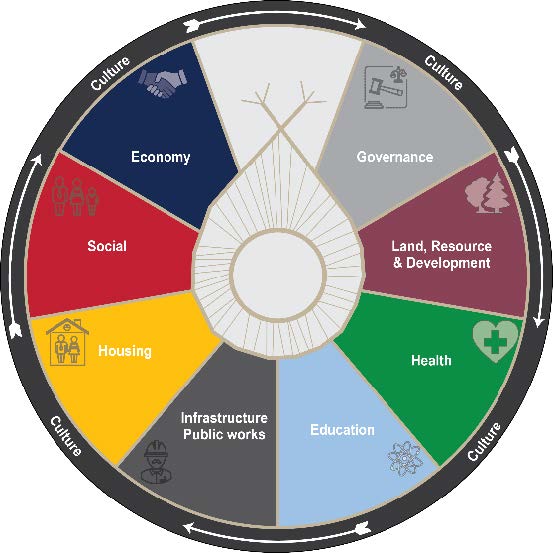
GOVERNANCE
Background
LLRIB leadership consists of 12 Council members and one Chief governed under a Custom Electoral
system that requires an election be held every three years The Chief and Council is the elected government of the LLRIB. Their function is to provide good government for the Band by implementing by-laws and policies, carrying out strategic planning, ensuring fiscal management and monitoring the overall band operations. LLRIB is consisted of six communities spread across a large geographical area, Little Red, Hall Lake, La Ronge, Sucker River, Stanley Mission, and Grandmother’s Bay. Three of the communities run their own administration including Stanley Mission, Little Red, and Grandmother’s Bay. Stanley Mission took over their own administration on April 1, 1998. Gordon Hardlotte, Director of operations was hired to oversee the day to day administration of programs in the community.
The 2012 Community Plan outlined the following action and commitments for the area of Governance:
Action Area: Open Communication, Governance, and Leadership
LLRIB Commitments:
- Organize, come together, and participate in regular community and Band-wide meetings, events, and
- Provide welcoming, safe, and supportive environments for all Band members to participate and share ideas about the future of LLRIB.
- Improve communication within and among LLRIB’s member

Images from https://kitsaki.com/
Address issues with alcohol and drugs in the community
- Community to enforce check stops
- Available security
- Curfew
- Educate kids at school
- Dry community
- Support programs
- AA meetings
- Available treatment centers
- RCMP involvement
Address issues with gangs in the community
- Support groups
- Role models for the youth
- Educate kids at school
- Workshops
- More community meetings
- Available treatment centers
- RCMP involvement
- Available RCMP
- More security
- Curfew
- Education within the community
Community Data
- Number of annual community meetings – TBD
- Number of training sessions attended by staff – TBD
- Male to Female Ratio for Chief and Council – TBD
- Number of general band meetings held annually – TBD
- Average length of time served in role of Chief and Council members – TBD
- First Nation election turnout – percent of eligible voters – TBD
- General Assessment Score – TBD
- Change in General Assessment Score – TBD
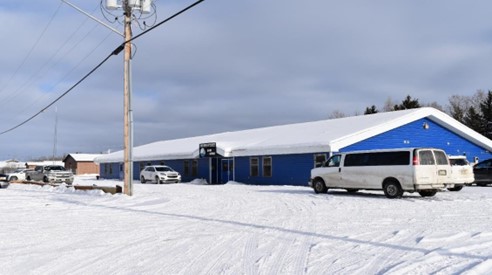
Land, Resources & Environment
Background
Culturally Significant Areas
- Important fishing areas
- Spiritual places
- Significant historical sites
- Historical gathering place on the island NE of Stanley Mission
- Holy Trinity Anglican Church Provincial and National Historic Site
Land, Resources and Environment Community Goals
Protect the Environment
- Protect the lakes and water sources from contamination
- Monitor lake for contamination
- Remove fuel tanks located near the lake
- Prohibit littering in community areas and lakes
- Restrict tree removal but allow for thinning of vegetation to prevent wildfires
- Reduce pollution from mines
- Relocate the lagoon further from community center
Protect Traditional and Historic Sites
Community Data
- Population density – TBD
- Land acquired through land claims – TBD
- Number of Urban Reserves Created – TBD
- Active number of leases – TBD
Health
Background
Stanley Mission Health Services Inc. promotes healthy community for the well-being of all community members in Stanley Mission.
Stanley Mission Health Services Inc. provides these programs and services:
- Nursing program / Primary Care
- CHR Program
- Addictions
- Community Support Services
- Medical Transportation
- Dental Therapist
- Home & Community Care Program
- Tuberculosis
- Maternal Child Health Care
- Immunization
- Prenatal Program
- HIV Program
- Diabetes Program
- FASD
- Nursing ED & PD
- Suicide Strategy
- Pharmacy Support
- Security Guard Program
- Elder Shelter
- H1N1
- Pandemic
- Wellness Program
- Mental Health Program
Stanley Mission Health Services Vision
Stanley Mission Health Services Inc. will provide access to comprehensive health care with integrity and respect for the people of Stanley Mission.
Stanley Mission Health Services Mission
To achieve our vision. Leadership will ensure adequate resources are available to provide the necessary health care programs. So that the people of Stanley Mission will enjoy a healthy way of life.
Confidentiality to be maintained in all aspects of the health care. Our clients will be empowered by the position changes in their health lifestyles. The health care facilities and staff will be expanded as funds become available to accommodate growth.
- Provide a variety of recreational programs that suit a wide range of interests, skill levels, and age
- Improve the physical structure and organization of each community to ensure fun and recreation become part of a daily routine.
- Focus on greater community involvement and volunteerism.
Goals from Stanley Mission Health Inc.
- To ensure the wellbeing of the people with the community
- To participate in the development and maintenance of a safe, healthy environment for the people of the community
- To foster and maintain positive and effective communication within the community
- Provide health services in an effective manner
Objectives from Stanley Mission Health Inc.
- Reduce annual mortality and morbidity
- Protect all children from childhood diseases
- Reduce communicable diseases
- Maintain reporting systems that accurately reflect the health status of the community
- To provide community access to health promotion and education
- Identify the needs of the community in cooperation within the community
- Establish formal communication with the community representatives
- Reduce teen pregnancies
- Reduce incidence of the diseases such as diabetes/hypertension
- Reduce the effects of poor maternal and infant care
- Cooperate with access to traditional health
- Reduce dependency on treatment services and increase health promotion activity and awareness
Health Community Goals
Ensure access to health programs and services in the community
- Provide addictions support services
- Provide mental health support services
- Invest in a community ambulance (improve response times)
- Hire additional registered nurses
- Develop a larger health centre
- Develop a pharmacy in the community
- Provide home care support for Elders
- Provide pre-natal programs
- Have Cree speakers on health staff to translate
- Emphasise the medicine wheel in health treatments
Improve community safety
- Increase security presence
- Increase RCMP presence and response times
- Establish a neighbourhood watch program
- Establish an emergency contact list
- Security cameras
- More street lighting
- Promote a “dry community “
Promote nutrition and physical activity
- Provide more healthy food options in the community
- Provide nutritionist support services
- Provide meals on wheels service for Elders
- Provide more opportunities for programmed recreation in the community (dance classes, sports tournaments in the community, etc.)
- Provide more facilities for recreation (gym/fitness centre/recreations complex, Skate Park, outdoor track, indoor skating rink/arena,Provide healthy lifestyle workshops playgrounds, swimming pool, etc.)
- Provide exercise programs for Elders
- Provide diabetes education programming
Community Data
- Number of diabetics – TBD
- Mortality rate – TBD
- Immunization rate – TBD
- Number of health clinic visits – TBD
- Tenure of Health Services Staff – TBD
- Number of ambulance / medical taxi / fly outs – TBD
- Number of first responders in community

EDUCATION
Background
The very first school established in Stanley Mission was in 1854 while the Anglican Church was being constructed, later on as people moved the south shore of the Churchill River in 1954 a one room school was build. In 1969, a new two room school was built in the settlement where one room was for younger aged children and the other room for older children, if children wanted to continue their education they would have to attend the residential school in Prince Albert. The school was taught up to grade six. In 1976, the administration of education in Stanley Mission was transferred to the LLRIB from the province. The school remained on the settlement side and was renamed to Keethanow School and offered kindergarten to grade nine. School committee was formed with representation from the settlement and the reserve community. The goals for this new administration was to teach students the Cree language, culture and traditions. From 1976 -1978 extensive additions were made to the school including a gymnasium, resource centre, science room, home economics room, industrial arts room, and three other classrooms. Teacherages were also constructed to house for out of town teachers. The cost of the additions were shared by both provincial and federal governments. After all additions were completed in 1979 high school classes for grade 10 were offered, and finally grades 11 and 12 were added later on. In 1993 the Keethanow School was closed as two new schools were built on the reserve side known as Keethanow Elementary School and Rhoda Hardlotte Memorial Keethanow High School, from 1997 – present the old school building is being used for post-secondary classes and other education programming.
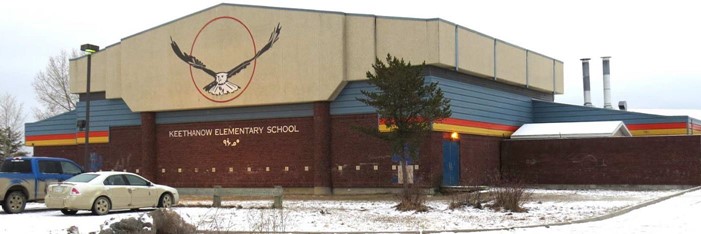

Education Community Goals
- Offer ABE course
- Offer GED course
- Provide transportation services or funding for transportation for students to be able to get to courses/training
- Provide drivers education courses
- Provide evening/weekend certificate training programs for adults
- Provide additional post-secondary education financial support
- Provide additional activities for youth
- Improve internet access for online courses
- Establish anti-bulling programs
- Improve communication between the community/parents and school
- Expand elementary school
- Renovate adult learning centre
- Provide additional post-secondary education financial support
Community Data
- Population on-reserve with a High School Diploma or equivalent – TBD
- Population on-reserve with a post-secondary certificate, diploma or degree – TBD
- High school graduation rate on-reserve – TBD
- High school graduation rate on-reserve – TBD
- High school graduation rate on-reserve – TBD
- Students funded by post-secondary program – TBD
- Students funded by post-secondary program – TBD
- Graduation rate for Post-Secondary Education – TBD
- Waiting list for post-secondary program – TBD
- Grade 12 graduates that attended post- secondary school – TBD
- Certificates last 5 years -TBD
- Diplomas last 5 years – TBD
- Degrees last 5 years – TBD
- Masters last 5 years – TBA
Infrastructure / Public Works
Background
Water
Water treatment plant operating an integrated biological reverse osmosis groundwater system. Water is piped to all community buildings and homes. There are only a handful of lots that are not serviced.
Sewage
All homes and community buildings are connected to the central sewer system. Waste is piped through one of six pump stations to a lagoon rust off the reserve that is shared with the Northern Hamlet of Stanley Mission.
Basic Services
All houses on reserve are connected to natural gas and electricity and receive garbage collection service. Garbage is picked up by truck and hauled to a landfill shared with the Hamlet.
Infrastructure for cellular phone and internet services is provided by the reserve.
Community Facilities
- Hockey Arena
- Youth Centre
- Boxing Gym
- Church
- Band Hall/Office
Action Area 6: Build Connections
LLRIB Commitments:
- Store
- RCMP Detachment
- Elementary/High School
- Amachewespimawin Elder’s Haven
- Health Centre
- Enhance and build new infrastructure to ensure direct, safe, and accessible routes to important destinations within and between each community.
- Develop creative and affordable transportation options for residents to travel within and between each
- Create gathering spaces that will link communities and people together.
Infrastructure / Public Works Community Goals
Maintain Community Infrastructure
- Remediate vandalised properties
- Regularly clean and maintain all community facilities
- Improve drinking water quality
- Upgrade water lines to homes
Invest in Community Facilities and Infrastructure
- Develop additional playground areas
- Establish a recycling program / depot
- Establish disposal service for large items (appliances, furniture, etc.)
- Provide larger garbage bins
- Invest in firefighting equipment (i.e. fire hall, fire trucks, hydrants)
- Provide regular garbage pickup services
- Develop a new Community Hall
Improve community road conditions
- Develop sidewalks / pedestrian walkways along main roads
- Pave main roads
- Regularly grade / maintain roads
- Install streetlights
- Fix potholes
- Install speed bumps to slow traffic
Community Data
- Number of boil-water advisory days – TBD
- Number of trained water technicians – TBD
- Length of roads on reserve by category – TBD
- Internet connectivity speed, point of presence – TBD
Housing
Background
LLRIB HOUSING MISSION STATEMENT
To improve the living conditions of all Members by providing Members with access to affordable housing that meets all health and safety standards through an orderly and regulated housing delivery system that is fair and equitable for all Members and by ensuring that the existing Housing Stock is maintained.
LLRIB HOUSING GOALS
Housing Department aims to fulfil the following housing goals for its Members:
- To build and provide access to safe, affordable and energy efficient housing that meets applicable building standards
- To develop and administer a maintenance program to ensure minimum levels of health and safety are met
- To extend the useful life of the Band’s existing Housing Stock
- To promote homeownership on LLRIB Land
The Housing Department manages Band rental units, INAC (non-rental) units, duplexes, 4-plexes and apartments. Housing applies annually for the funding of new housing projects and coordinates the construction with contractors, trades, utility companies and suppliers.
The 2012 Community Plan outlined the following action and commitments for the area of Housing:
Action Area 3: Re-Invent Housing
LLRIB Commitments:
- Design and build housing that responds to local needs and
- See every housing project as a way to use and develop local resources (existing infrastructure, material, skills, knowledge, etc.).
- Build community pride through .
Housing Community Goals
Enhance existing housing conditions and increase new home availability
- Complete Home Ownership Policy
- Increase communication to all members regarding the various opportunities for home ownership
- Identify approaches to increase the cycle of renovations to existing houses
- Enhance members’ independence and life skills
Develop and implement a home maintenance education program for all homeowners and renters
- Ensure members have access to appropriate
- Develop an Elders home
- Develop bachelor housing units
- Develop additional homes to address overcrowding
- Renovate existing homes
- Establish a Housing Committee
Community Data
- Housing wait list –
- Number of dwelling units on-reserve –
- Average persons per household on-reserve –
- Percent of dwellings that are crowded – TBD
- Percent of dwellings that are in adequate condition – TBD
- Percent of on-reserve dwellings that require major renovations – TBD
- Percent of dwellings that need replacement – TBD
- New dwellings constructed in past three years – TBD
- Number of empty lots ready for development – TBD
- Number of housing units for community staff (i.e. teachers, CFS, RCMP, nurses, etc.) – TBD
Social
Background
The LLRIB Social Development Department provides services and resources to individuals who reside on reserve and are unable to meet their basic needs. The department also provides Pre-Employment Supports
(PES) programming. The PES program aims at increasing an Income Assistance client’s employability by addressing barriers to employment. PES provides client supports specific to the individual client, within a service delivery case management model. PES Caseworkers provide individualized assessments and develop Mandatory Action Plans that will identify how a client plans to remove barriers to employment and develop the necessary skills and enter educational programs that lead to training and employment (AANDC, 2014). The following are some possible services and programming that PES may offer in order to increase their clients’ employability:
- Literacy Courses
- Budgeting
- Work Skills Training
- Safety Ticket Training
- Driver’s Education
- GED/ABE
- Obtaining Identification Cards
- Work Experience
- Life Skills Training
The Band Membership is also under Social Development, membership is maintained by the Membership Officer. The Band Membership Officer records all events (births, deaths, marriages, divorces, miscellaneous amendments, forced age of majority) to Indigenous Services Canada for the Indian Registry, including transfer requests in and out of the LLRIB. The Membership Officer reports to Chief and Council regularly to update the population statistics and events reported. Indian Status Cards are issued from this office to Band members and to other person(s) applying from other Bands across Canada. Population statistics are completed yearly. The Membership Officer also assists LLRIB Members only in completing assorted forms/ applications.
LLRIB Child and Family Services
In March 1994, the Minister of Social Services, now the Ministry of Social Services, announced that a Tripartite service agreement had been signed with Chief & Council of the LLRIB and Lac La Ronge Child and Family Services Agency Inc. This agreement authorized Lac La Ronge Indian Band Child & Family Services Agency to take direct operational responsibility, for the delivery of child and family services, to the band members in the six LLRIB communities.
The ICFS Agency is responsible for the administration and operation of the following services and programs, subject to the legislation of The Child & Family Services Act for the Province of Saskatchewan and the ICFS Agency Policy & Procedures:
- Child
- Protection Services
- Foster Care Services
- Professional Management and Staff
- Public Awareness and Education
- Training in Human Resource Development
- Program Evaluation
- Family Support Services
- Preventative Services
- Child and Youth Services
The 2012 Community Plan outlined the following action and commitments for the area of Youth (social development):
Action Area 5: Empower Youth LLRIB Commitments:
- Develop a variety of inclusive and ongoing activities, programs, and events that will build and enhance skills and knowledge and encourage creativity.
- Provide safe, nurturing, and secure places for youth to gather, learn, and have
- Enable and encourage parental involvement and support regarding their children’s well-
Social Community Goals
Motivate and inspire youth to achieve their goals
- Bring in role models
- Teach basic life skills
- Youth centers open longer
- More parent involvement
- Educate about higher education
- Acknowledgment for achievements
- Funding assistance
- Expand programs available
- Land base training
- Hold additional cultural events
- Provide sports and recreation activities
- Address violence
- Provide transportation services
Community Data
- Adult correctional services, custodial admissions in Saskatchewan by Aboriginal identity –
- Number of homicide victims –
- Missing and murdered indigenous women and men –
- Men/women victims of spousal abuse –
- Number of Income Assistance Clients –
- Number of suicides per year –
- Number of community of events per year –
- List of volunteer boards, committees, –
Economy
Background
Action Area 1: Capitalize on Our Assets to Stimulate Entrepreneurship
LLRIB Commitments:
- Increase and support skill development and education opportunities for all
- Foster exploration and entrepreneurship that builds on the unique strengths of the
- Develop more opportunities for all six communities as well as off-reserve members to work together to develop innovative Band-wide projects.
Economy Community Goals
Create employment opportunities for members
- Renovate, improve or expand existing businesses (community store / gas stations) to provide more consumer goods and choice
- Identify and implement approaches to support the Traditional Economies (hunting, fishing, trapping, culture and arts)
- Establish and implement a job creation strategy
- Establish youth summer employment programs to meet community needs (e.g. spring clean ups, community landscaping, home painting projects)
- Develop commercial enterprises

4 Community Action
4.1 How to Use This Plan
The CDP is everyone’s plan. We all have roles implementing it. The following are some examples of what community members, champions, Chief and Council, and community staff will do.
Community members will:
- Contribute strategies based on individual passions and strengths
- Participate in activities and events that bring the vision alive
- Commit to be informed, provide input and share with family
- Honour the work that has been done
Champions will:
- Provide advice and encouragement to help develop a detailed plan for each theme
- Hold knowledge in that topic area
- Connect and encourage community members to participate in plan implementation
- Meet with other champions to share information, coordinate among themes, and review progress toward the vision
- Identify and mentor potential future champions
Chief & Council will:
- implement the plan, and each theme within it
- Approve, implement, and report on the plan
- Work with champions related to the various Council portfolios
- Liaise with and lobby other organizations and governments
Community Staff will:
- Use the plan objectives as a guide for ongoing work and development of proposals for new initiatives and funding
- Engage and facilitate community members and Champions to develop plans for each theme
Overall, we will:
- Empower ourselves and each other; we are all leaders, with opportunities to take initiative
- Think proactively, when you sense something coming, consider what needs doing and how you can contribute to a proactive response
- Cooperate in teams, working and playing together creates opportunities for synergy, learning, mutual support and fun
- Use our values and principles: remembering who we are, what is important to us, and how we work together will help us succeed
- Keep it positive: be constructive, building on individual strengths and community assets
- Treat conflict as an opportunity for learning: practice compassion and reflective listening when we have disagreements
- Celebrate and recognize achievements: honour the contributions of individuals and teams toward our success in implementing the plan
- Add new community reports to the master copy of this CCP, which will ensure a ‘library’ of documents is maintained and available for leadership and various departments to review
4.2 Monitoring, Evaluating, and Updating this Plan
The CDP is intended to be a living document. This means it will be monitored and updated as community priorities evolve.
Monitoring
We will document activities and achievements that contribute to the plan and its implementation on an ongoing basis. Once a year, we will celebrate what we have accomplished together. Recognition of steps towards that visions, both small and large, will help energize us to keep moving forward. We will repost on progress annually, using this plan as a guide for communicating about what has been done and how.
Evaluating
We will assess the process and results of plan implementation every 5 years, or more often if needed. The Executive Director will ensure that the evaluation of progress toward implementing the Community Strategic plan occurs in a timely and inclusive way. Champions and staff will carry out the evaluations and engage interested community members.
Updating
We will review our visions, values, principles, goals and objectives following each evaluation of progress toward plan implementation (every 5 years, or more often as needed). We will update the Plan based on community needs and priorities identified through community engagement. This updating will help up make sure we continue to grow and evolve as a community. We must remain willing and able to respond to changes in the world, taking advantage of emerging opportunities and addressing external challenges.
4.3 Implementation Table
There are many identified actions and projects the community would like to undertake as a result of this Community Development Plan. This information is illustrated in the Implementation Table which summarizes community priority areas, describes their relative importance, and identifies what resources are required. The Implementation Table should be referred to and updated often as projects are completed and priorities change.
The Implementation Table, along with information within this document, should be used when applying for grants and/or project funding opportunities. This ensures leadership, various departments, and community organizations are working towards the same goals.
